
 I’d like to discuss HIV/AIDS as it pertains to mental health, since I think it’s a topic that deserves more emphasis. I think it’s fairly intuitive that living with a disease like HIV/AIDS would be likely to have an adverse impact on one’s mental health. This goes for living with a lot of illnesses, especially life-threatening ones, but I believe there is still a special social stigma attached to HIV/AIDS which makes the reality of coping with it in a sometimes cold and judgmental world all that much harder. For the purposes of this diary, I will not be delving heavily into signs/symptoms or statistics for the populations affected. Rather, I want to focus on the mental health concerns that go along it.
I’d like to discuss HIV/AIDS as it pertains to mental health, since I think it’s a topic that deserves more emphasis. I think it’s fairly intuitive that living with a disease like HIV/AIDS would be likely to have an adverse impact on one’s mental health. This goes for living with a lot of illnesses, especially life-threatening ones, but I believe there is still a special social stigma attached to HIV/AIDS which makes the reality of coping with it in a sometimes cold and judgmental world all that much harder. For the purposes of this diary, I will not be delving heavily into signs/symptoms or statistics for the populations affected. Rather, I want to focus on the mental health concerns that go along it.
As one might expect, depression and anxiety are prevalent amongst people with HIV/AIDS. The psychological strain of dealing with the condition itself can be intense, and the added burden of trying to cope with social stigma only increases the risk of developing mental health problems. Common responses to an initial diagnosis of the disease are denial, anger, sadness/depression, fear/anxiety, and general stress. Even for those who have never suffered from a life-threatening illness, I think it’s pretty easy to understand why someone would have those reactions. Sympathizing is, perhaps, a relatively simple task – truly empathizing is not. It is impossible for someone who does not have to live with HIV/AIDS to “understand” how these patients feel.
Patients diagnosed with HIV/AIDS are faced with a variety of new problems, which they must learn how to work through in order to cope with their illness:
AIDS frequently forces catastrophic social change on persons with AIDS. These include (a) loss of job; (b) eviction; (c) denial of insurance; (d) denial of public services, including police, sanitation, and mortician services; (e) denial or delay of health care services, or adherence to excessive infection control precautions on the part of health care workers; and (f) effects of adverse legislation, especially in the areas of constraints on homosexual behavior, mandatory HIV screening, and job restriction or firing (Dalton, 1987; Rubenfeld, 1987). At the same time, those who have AIDS are faced with physical disability and prohibitive medical expenses that often exhaust their financial resources and force them to apply for Medicaid and public assistance. (Tross & Hirsch, p. 929-930)
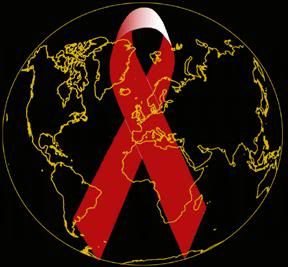
It has been suggested that in the realm of anxiety disorders alone, living with HIV/AIDS can lead to:
- Panic attacks and disorder
- Phobias
- Generalized anxiety disorder
- Obsessive-compulsive disorder
- Acute stress disorder
- Post-traumatic stress disorder
- Adjustment disorder with anxious mood
The estimated prevalence of anxiety disorders in HIV/AIDS patients is significantly higher than what one would expect in the general population. Patients present with a plethora of symptoms and may manifest a variety of disorders.
A recent study has shown that among HIV-infected patients receiving medical care, 20.3% have an anxiety disorder, with 12.3% meeting the criteria for panic disorder, 10.4% for PTSD, and 2.8% having generalized anxiety disorder. Patients with other psychiatric disorders, such as adjustment disorders, major depression, psychosis, or substance use disorders, can also present with significant anxiety.
HIV Guidelines (PDF)
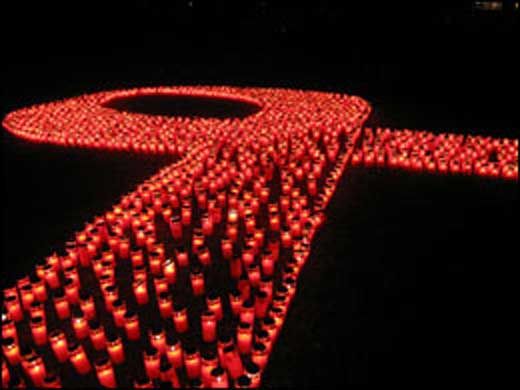
Changing one’s lifestyle drastically may lead to intense discomfort and anxiety, and persons with HIV/AIDS must change their lives in a variety of ways.
The mandate to initiate and maintain safer sexual and drug use precautions may become an emotional crisis itself. Restraints on sexual or drug use behavior may demand new social skills for negotiation, limit-setting, or partner rejection that the individual may not have developed. They may demand new psychological skills for frustration tolerance, anxiety reduction, peer rejection, and self-reassurance and self-control. Joseph and her colleagues (Joseph, Emmons, Kessler, Ostrow, & Phair, 1985; Ostrow, Emmons, & Altman, 1985) have documented these psychological costs: Seventy-five percent of their sample experienced daily stress as a result of their risk reduction efforts; about the same proportion doubted the efficacy of these efforts. Furthermore, levels of both stress and doubt were found to be predictors of general psychological distress. (Tross & Hirsch, p. 930).
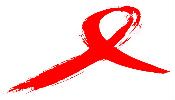 I have not yet found any research to support this, but my personal opinion is that dealing with a life-threatening illness may lead to the development of anxious symptomatology due to a thwarted fight-or-flight response. The instinctive reaction to threats against one’s life is to either fight or flee the anxiety-provoking stimulus. In terms of diseases of this nature, however, the threat is not something which can be easily fought or fled. The fight-or-flight instinct is thus rendered impotent, potentially leading to further anxiety. Channeling the “fight” impulse into adhering carefully to treatment and educating oneself about the disease may prove efficacious for some, but it seems natural to me that the inability to respond “instinctively” to an ever-present threat against one’s life would lead to psychological distress. But that is purely conjecture.
I have not yet found any research to support this, but my personal opinion is that dealing with a life-threatening illness may lead to the development of anxious symptomatology due to a thwarted fight-or-flight response. The instinctive reaction to threats against one’s life is to either fight or flee the anxiety-provoking stimulus. In terms of diseases of this nature, however, the threat is not something which can be easily fought or fled. The fight-or-flight instinct is thus rendered impotent, potentially leading to further anxiety. Channeling the “fight” impulse into adhering carefully to treatment and educating oneself about the disease may prove efficacious for some, but it seems natural to me that the inability to respond “instinctively” to an ever-present threat against one’s life would lead to psychological distress. But that is purely conjecture.
From the World Health Organization in 2008:
7. HIV/AIDS imposes a significant psychological burden. People with HIV often suffer from depression and anxiety as they adjust to the impact of the diagnosis of being infected and face the difficulties of living with a chronic life-threatening illness, for instance shortened life expectancy, complicated therapeutic regimens, stigmatization, and loss of social support, family or friends. HIV infection can be associated with high risk of suicide or attempted suicide. The psychological predictors of suicidal ideation in HIV-infected individuals include concurrent substance-use disorders, past history of depression and presence of hopelessness.
8. Apart from psychological impact, HIV infection has direct effects on the central nervous system, and causes neuropsychiatric complications including HIV encephalopathy, depression, mania, cognitive disorder, and frank dementia, often in combination. Infants and children with HIV infection are more likely to experience deficits in motor and cognitive development compared with HIV-negative children.
WHO (PDF)
Tross and Hirsch suggest that everything from the diagnosis of the illness to the difficulties of living with it day to day is prone to cause stress, anxiety and depression. Initial problems primarily include adjustment reactions, bereavement reactions, and emotional strain resultant from dramatic lifestyle changes. In addition to the shock and even anger associated with diagnosis, an individual may even go through the stages of grief as described by Elisabeth Kübler-Ross, which may cause an existential crisis of sorts.
In particular, coping with the diagnosis may be conceptualized as a variant of the “anticipatory grief reaction” originally observed in parents and spouses of dying patients (Bozcman, Orbach, & Sutherland, 1955; Chodoff, Friedman, & Hamburg, 1964; Futterman & Hoffman, 1973). The traumatic impact of a life-threatening diagnosis has been described as the “existential plight” of the first 100 days of illness (Weisman & Worden, 1976). It is characterized by preoccupation with mortality, a sense of personal vulnerability, and heightened emotional distress. Diagnosis may also be seen as a disruptive stressor to homeostatic functioning. Thus, these phenomena may be understood as manifestations of the “stress response syndromes” (Horowitz, 1976; Selye, 1956) or “traumatic disorders” (Janis, 1958) that may follow catastrophic situations. (Tross & Hirsch, p. 930)
 The impact of depression in the lives of people living with HIV/AIDS is far-reaching. The percentage of this population which will suffer from depression is staggering, and there are more dangers associated with it than with non-HIV afflicted individuals suffering from depression. Of paramount importance is its impact on adherence to antiretroviral therapy, which requires maximum compliance in order to prove effective. Though ART can be very helpful in inhibiting the progression of HIV, proper adherence is crucial. Simoni and colleagues have suggested that depressive symptomatology increases the likelihood of nonadherence to medication regimens, due to several key factors:
The impact of depression in the lives of people living with HIV/AIDS is far-reaching. The percentage of this population which will suffer from depression is staggering, and there are more dangers associated with it than with non-HIV afflicted individuals suffering from depression. Of paramount importance is its impact on adherence to antiretroviral therapy, which requires maximum compliance in order to prove effective. Though ART can be very helpful in inhibiting the progression of HIV, proper adherence is crucial. Simoni and colleagues have suggested that depressive symptomatology increases the likelihood of nonadherence to medication regimens, due to several key factors:
. . .depression is the most frequently diagnosed psychiatric condition in the HIV-positive population (Treisman et al., 2001). Estimates suggest that between 18% – 60% of people living with HIV meet criteria for depression sometime during their illness (Gordillo et al., 1999; Orlando et al., 2002; Treisman et al., 2001). Individuals struggling with depression may lack the physical and mental energy and sustained motivation to maintain high levels of adherence (Tucker et al., 2004). In addition, depressed patients frequently have feelings of hopelessness directed toward themselves and their future and thus may not fully appreciate the association between medication adherence and improved health outcomes. Finally, individuals struggling with both HIV and depression may be more prone to cognitive impairment or forgetfulness
which additionally impede adherence. (Simoni, Pantalone, Plummer, & Huang, p. 489, emphasis added)
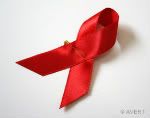 It has been suggested that, as with other chronic illnesses, a strong support system may improve an HIV/AIDS patient’s long term prognosis. As Simoni, Frick, and Huang point out, “The social support literature refers to major functions of support that serve to bolster health, such as control and mastery, self-acceptance and esteem, and social interaction” (p. 75). Social support serves a number of functions in relation to adherence to medical treatment, including helping to ameliorate the depression which may hinder it.
It has been suggested that, as with other chronic illnesses, a strong support system may improve an HIV/AIDS patient’s long term prognosis. As Simoni, Frick, and Huang point out, “The social support literature refers to major functions of support that serve to bolster health, such as control and mastery, self-acceptance and esteem, and social interaction” (p. 75). Social support serves a number of functions in relation to adherence to medical treatment, including helping to ameliorate the depression which may hinder it.
Syme (1985) suggested that social support results in increases in positive affect and other positive psychological states through the stability, predictability, and control that it provides. Indeed, the ability to maintain PSOM such as focused attention, productivity, responsible caretaking, relaxation, sensuous pleasure, and a sense of sharing has been conceptualized as an important aspect of adjustment to stressful situations (Horowitz, Adler, & Kegeles, 1988). (Gonzalez et al., p. 413)
In their study, Gonzalez and colleagues found that the quality of social support was also important.
Perceived quality of social support was significantly associated with medication adherence even after we controlled for age and alcohol consumption. These findings are consistent with previous research that has shown relationships between aspects of support and medication adherence among HIV patients on combination therapy (Catz et al., 2000; Singh et al., 1999). Perceived quality of social support was also associated with less depressive symptomatology and higher levels of PSOM, consistent with previous research (S. Cohen &Wills, 1985; Turner-Cobb et al., 2002). (Gonzalez et al., p. 416)
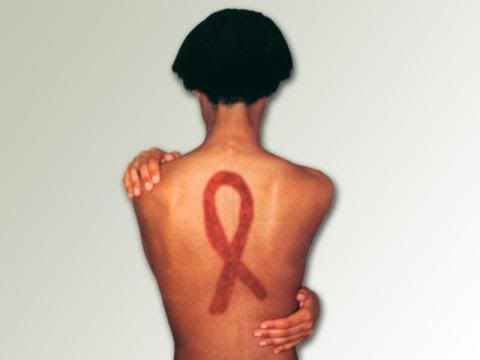
Social support doesn’t just mean loved ones. It has a lot to do with professional relationships as well.
One social worker who has been involved in the AIDS crisis since the early days is Lisa Cox, PhD, LCSW, MSW, associate professor and social work program coordinator at The Richard Stockton College of New Jersey.
[. . .]
According to Cox, there are many variables related to social support that can affect the client’s ability to remain compliant. “Does the client have economic support? Do they have day-to-day, tangible support? Do they have money to buy medication? Insurance? Do they have transportation?”
Cox also emphasizes one often-overlooked aspect of the client’s social support network-clients’ relationship with their doctor. “When you think about how much time a patient spends with the doctor, you can see how important it is to think about the ‘relationship factor’ that patients have with their healthcare providers. Doctors and nurses and social workers can be seen as positive bearers of social support, and that can help clients be more medically compliant.”
Suicidal ideation is also disturbingly common in people living with HIV/AIDS (Schneider et al, p. 776). From a study conducted in 2008:
Nearly a third of people with HIV from five London clinics reported having had recent thoughts of suicide, according to a study published in the August 20 issue of AIDS.
[. . .]
Sherr and her colleagues asked the study volunteers to complete an extensive survey about their health and psychological well-being. Thirty-one percent of the volunteers reported suicidal ideation in the past seven days. Of those, about 5 percent said the suicidal thoughts were constant, and 11 percent said they were frequent. Heterosexual men were almost 50 percent more likely to report suicidal ideation than heterosexual women or gay men. There was also a trend among the foreign-born to report suicidal ideation more frequently.
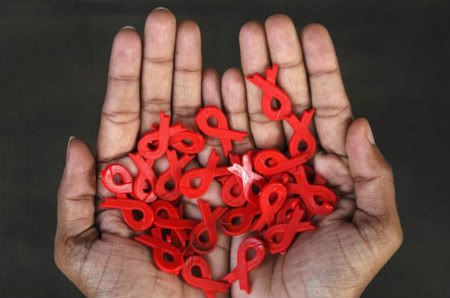
In a study on HIV-infected gay men and depression, Hays, Turner, and Coates discuss the suicide risk associated with the disease, indicating that, “The acquired immunodeficiency syndrome (AIDS) epidemic exerts a profound psychological toll on gay men. Gay men in AIDS epicenters like San Francisco have been found to have fairly high levels of depression (Hays, Catania, McKusick, & Coates, 1990). A recent study showed that gay men with AIDS living in New York City were found to be 36 times more likely to commit suicide than men who did not have AIDS (Marzuk et al, 1988)” (p. 463). The results from their study conclude:
First, experiencing HIV symptoms was associated with greater depression among gay men. Second, gay men who were more satisfied with the social support they received were less likely to show increased depression 1 year later. Third, satisfaction with informational support appeared especially critical in buffering the depression associated with experiencing HIV symptoms. These findings offer valuable insight in understanding the psychological needs of gay men confronting the AIDS crisis and have important practical implications for designing mental health services to meet those needs. (p. 465).
 The fear of HIV/AIDS is so severe for some people that even the possibility of having contracted the disease has been found to have influenced individuals’ decisions to commit suicide (Mishara, p. 88). The increased risk of suicide has been noted enough that it is essential that any medical/psychiatric treatment of persons with HIV/AIDS take this risk into account and guard against it. The good news is that social support and treatment really do decrease the risk of suicide. The bad news is that there are plenty of people in this world with HIV/AIDS who are lacking one or both of those things.
The fear of HIV/AIDS is so severe for some people that even the possibility of having contracted the disease has been found to have influenced individuals’ decisions to commit suicide (Mishara, p. 88). The increased risk of suicide has been noted enough that it is essential that any medical/psychiatric treatment of persons with HIV/AIDS take this risk into account and guard against it. The good news is that social support and treatment really do decrease the risk of suicide. The bad news is that there are plenty of people in this world with HIV/AIDS who are lacking one or both of those things.
The importance of a strong social support network has been noted throughout the literature. Accepting family, friends, and others in an individual’s peer group may prove capable of helping with emotional coping. The emotional strain and distress of living with HIV/AIDS is not something which can be “fixed” by anyone, but the added stress of isolation may deepen depression and increase anxiety. For these reasons also, social support is vital. Isolation has been shown to correlate with suicide (PDF), and the risk of isolation among HIV/AIDS sufferers is especially high. This is likely due to a variety of factors, including damage to an individual’s self-esteem and social stigma.
For many persons with HIV/AIDS, spirituality may provide immense comfort.
. . .spirituality provides a sense of meaning in the face of threat to one’s existence (Frankl, 1959; Mullen, Smith, & Hill, 1993; Pargament & Hahn, 1986). This has been found for both cancer patients (Connor et al., 1990) and those diagnosed with HIV/AIDS (Jenkins, 1995; Schwartzberg, 1993). Research on coping has highlighted the role of rel
igion in social cognition, including attributions of the nature and controllability of an aversive event and its reframing or reinterpretation in a more positive light (Pargament et al., 1990). Sevensky (1981) suggested that prayer allows expression of the anger, disappointment, and fear that often accompany the illness experience; engenders a closer relationship with God; and provides the opportunity for contemplation and meditation. Additionally, it assists one in repairing damaged relationships, letting go of the past, achieving a sense of closure while also providing hope of an ultimate victory, despite death, by joining God (Sevensky, 1981).[. . .]
The use of spiritually based coping has been found to be more prevalent among women (Spilka, Hood, & Gorsuch, 1985) and among African Americans (Jackson, Neighbors, & Gurin, 1986; Potts, 1996) than other individuals. (Simoni, Martone, & Kerwin, p. 140)
 Really, the best coping mechanism is… whatever works for the individual. Whether that is spirituality, psychotherapy, taking up the cause to educate others about the disease, or anything else, what works best will vary person by person. If any of you reading lives with HIV/AIDS, or knows someone who does, please share your experiences and coping mechanisms in the comments if you feel comfortable doing so. Your input is invaluable, and you never know who it might help.
Really, the best coping mechanism is… whatever works for the individual. Whether that is spirituality, psychotherapy, taking up the cause to educate others about the disease, or anything else, what works best will vary person by person. If any of you reading lives with HIV/AIDS, or knows someone who does, please share your experiences and coping mechanisms in the comments if you feel comfortable doing so. Your input is invaluable, and you never know who it might help.
Now we turn to the issue of stigmatization and discrimination against persons with HIV/AIDS and the psychological effects of coping with this type of marginalization. The discrimination that people with AIDS have suffered over the years has been pervasive, and it is a horrific reality that persons with HIV/AIDS will have to deal with it. In the 1980s, fear of AIDS became, perhaps, a bigger epidemic than the virus itself. People have all sorts of misconceptions about the disease. Many people fear getting AIDS from kissing, holding hands, using the same toilet seat as an HIV/AIDS-infected person, and many more improbable or impossible sources. This type of misinformation leads to further discrimination, which can in some cases result in the criminalization of AIDS, an increasingly widespread problem which affects people around the world.
The program below discusses the dangers of criminalizing HIV/AIDS. (Please watch.)
“The Cost of Stigma”
Stigma is the invisible mark on individuals targeted by fear and misinformation. This month on IN THE LIFE, we look at the power of stigma within our justice system and how the myths and fear that spread with the AIDS epidemic gave rise to laws criminalizing HIV transmission. And we meet researchers who consider stigma as a possible key link between bisexuality and poor health.
Stigma is something that all persons with HIV/AIDS must live with every day, and it is undoubtedly a highly destructive influence in many people’s lives.
AIDS-related stigma (or, more simply, AIDS stigma) refers to prejudice, discounting, discrediting, and discrimination directed at people perceived to have AIDS or HIV, and the individuals, groups, and communities with which they are associated.
AIDS stigma is expressed around the world in a variety of ways, including:
- ostracism, rejection, and avoidance of people with AIDS (PWAs)
- discrimination against PWAs
- compulsory HIV testing without prior consent or protection of confidentiality
- violence against persons who are perceived to have AIDS or to be infected with HIV
- quarantine of persons with HIV
AIDS stigma is effectively universal, but its form varies from one country to another, and the specific groups targeted for AIDS stigma vary considerably.
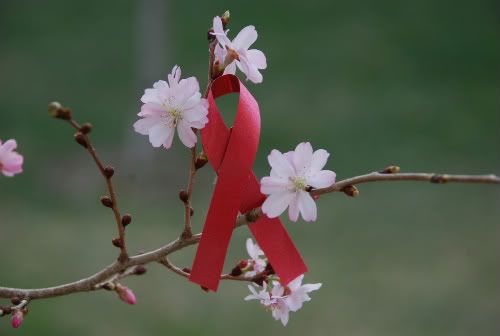
 The psychological effects of dealing with HIV/AIDS stigma can be serious, and coping with it is not easy to manage (PDF). Sadly, these stigmas are very much present in the mental health field. One hopes that graduated and certified mental health professionals know better, but that’s not necessarily the case. People tend to be ignorant about things they don’t understand, and mental health professionals are people too. The key to decreasing stigmatization and discrimination is increasing knowledge and understanding. My only personal experience with seeing this kind of stigma comes from class, rather than from the field. I’ve sat in more than one counseling/psychology class where the professor asked the students what should be done if they found out that an HIV/AIDS-infected client had not yet told his/her partner about his/her status, and there’s always a lot of confusion from the students – followed by a lengthy explanation from the professor about how there is confusion in the field at large.
The psychological effects of dealing with HIV/AIDS stigma can be serious, and coping with it is not easy to manage (PDF). Sadly, these stigmas are very much present in the mental health field. One hopes that graduated and certified mental health professionals know better, but that’s not necessarily the case. People tend to be ignorant about things they don’t understand, and mental health professionals are people too. The key to decreasing stigmatization and discrimination is increasing knowledge and understanding. My only personal experience with seeing this kind of stigma comes from class, rather than from the field. I’ve sat in more than one counseling/psychology class where the professor asked the students what should be done if they found out that an HIV/AIDS-infected client had not yet told his/her partner about his/her status, and there’s always a lot of confusion from the students – followed by a lengthy explanation from the professor about how there is confusion in the field at large.
I believe that all of this can get better. Treatments will be developed that are more effective, and if enough work is done to educate people, then social attitudes will continue to improve. But as my final thought – and something for you to think about – just to show you how much work we have left to do to educate the general populace…
In an Ethics class I had not so long ago, the professor asked the aforementioned question about HIV/AIDS clients and their uninformed partners, and a student actually responded (after a long silence) with:
“Call the police?”
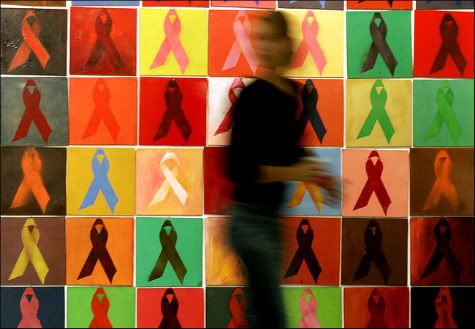
If you need someone to talk to…
The CDC (Center for Disease Control) National Prevention Information Network: 1-800-458-5231 9AM-6PM Mon-Fri includes info on new medicines, treatment trials, HIV & AIDS, with info specialists avail. to answer questions; also at www.CDCNAC.org (CDC National Aids Clearinghouse)
National AIDS Hotline: 800-342-AIDS (2437) Information and referrals to local hotlines, testing centers, and counseling. Open 24 hours, seven days a week.
AIDS Hotline in Spanish: 800-344-SIDA (7432) Open 8 a.m. to 2 a.m. Eastern Standard Time, seven days a week.
AIDS Hotline for the Hearing Impaired: 800-243-7889 (TDD) Open 10 a.m. to 10 p.m. Eastern Standard Time, Monday through Friday
National Sexually Transmitted Disease Hotline: 800-227-8922 Information and referrals to free and low-cost public clinics. Operators can answer general questions on prevention, symptoms, transmission and treatment of sexually transmitted diseases. Open 8 a.m. to 11 p.m. Eastern Standard Time, Monday through Friday.
Many more hotlines and information sources HERE.
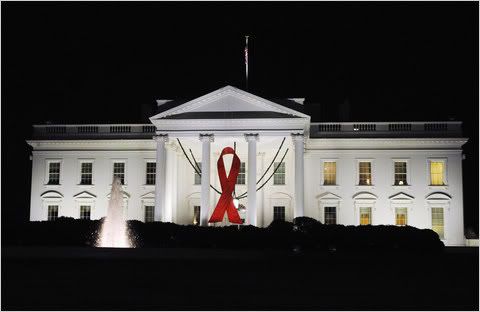
Gonzalez, J., Penedo, F., Antoni, M., Duran, R., McPherson-Baker, S., Ironson, G., Fernandez, M., Klimas, N., Fletcher, M., & Schneiderman, N. (2004). Social support, positive states of mind, and HIV treatment adherence in men and women living with HIV/AIDS. Health Psychology, 23(4), 413-418.
Hays, R., Turner, H., & Coates, T. (1992). Social support, AIDS-related symptoms, and depression among gay men. Journal of Consulting and Clinical Psychology, 60(3), 463-469.
Mishara, B. (1998). Suicide, euthanasia, and AIDS. Crisis, 19(2), 87-96.
Schneider, S., Taylor, S., Hammen, C., Kemeny, M., & Dudley, J. (1991). Factors influencing suicide intent in gay and bisexual suicide ideators: differing models for men with and without human immunodeficiency virus. Journal of Personality and Social Psychology, 61(5), 776-788.
Simoni, J., Frick, P., & Huang, B. (2006). A longitudinal evaluation of a social support model of medication adherence among HIV-positive men and women on antiretroviral therapy. Health Psychology, 25(1), 74-81.
Simoni, J., Martone, M., & Kerwin, J. (2002). Spirituality and psychological adaptation among women with HIV/AIDS: implications for counseling. Journal of Counseling Psychology, 49(2), 139-147.
Simoni, J., Pantalone, D., Plummer, M., & Huang, B. (2007). A randomized controlled trial of a peer support intervention targeting antiretroviral medication adherence and depressive symptomatology in HIV-positive men and women. Health Psychology, 26(4), 488-495.
Tross, S. & Hirsch, D. (1988). Psychological distress and neuropsychological complications of HIV infection and AIDS.American Psychologist, 43(11), 929-934.
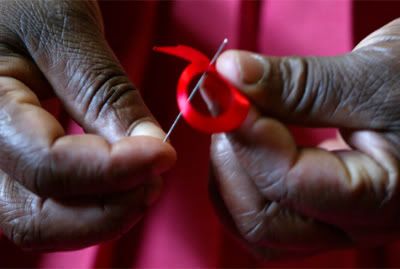
33 comments